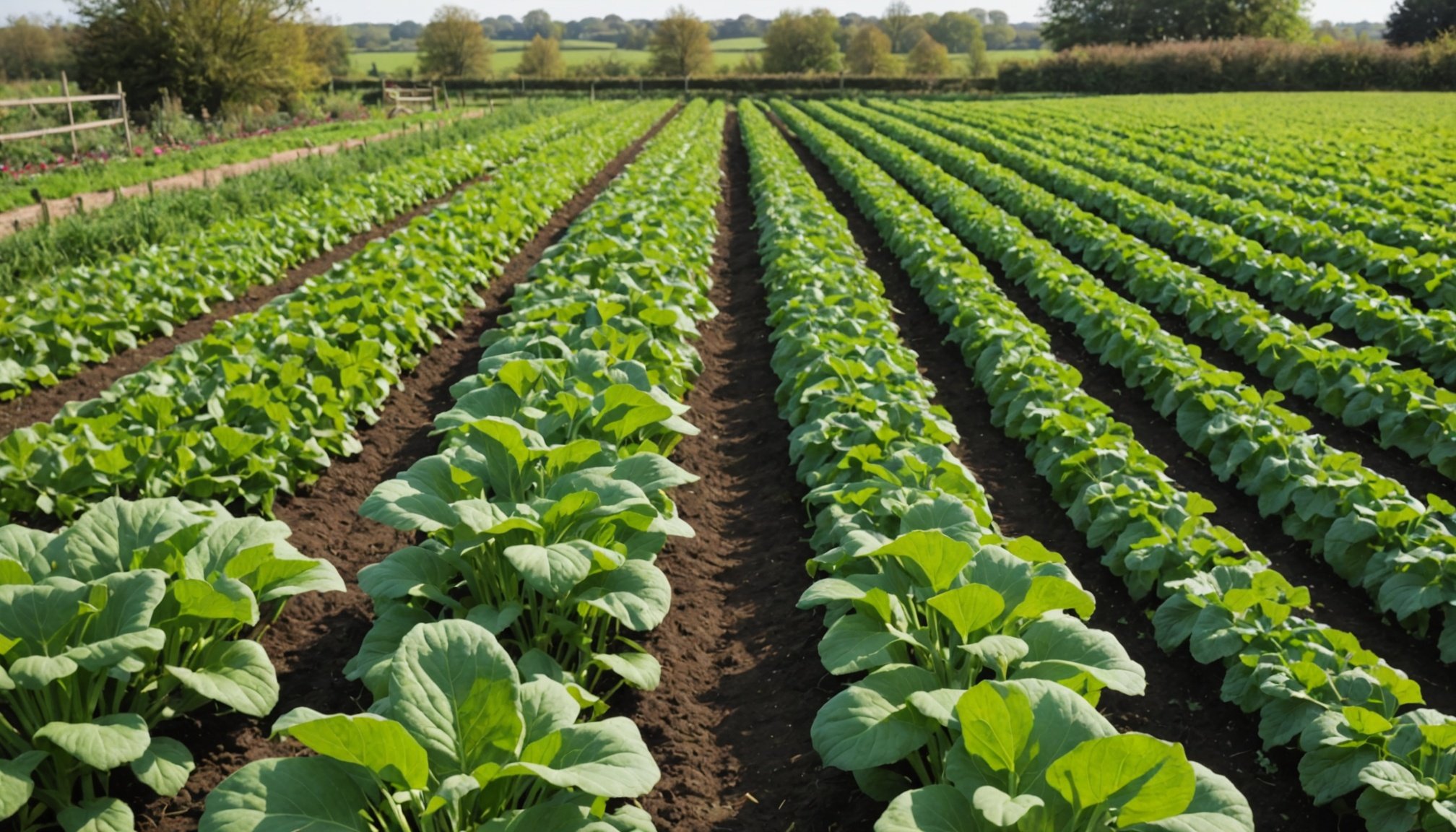As you delve deeper into the world of gardening and farming, you will find that the practice is much more than simply planting seeds and harvesting produce. It involves a deep understanding of the various factors that can directly impact the growth and yield of your crops. One such crucial factor is crop rotation. This is a systematic approach to deciding which crop to grow where in your garden or field each year. It is a technique that requires careful planning and a keen understanding of plants and soil health.
When you master the art of crop rotation, you will be able to boost your yield, improve your soil, and prevent the onslaught of pests and diseases. So, how can you maximize the benefits of crop rotation in a UK garden? Let’s delve into the details.
Cela peut vous intéresser : Which Native UK Plants Attract Beneficial Insects for Organic Pest Control?
Understanding Crop Rotation
Simply said, crop rotation is a systematic procedure where different crops are grown in a specific order over several years in the same area. The process of crop rotation can be as simple as not growing the same crop in the same place two years in a row, or it can be as complicated as a multi-year plan that takes into account many different types of crops.
The key goal of crop rotation is to improve soil health and fertility, manage pests and diseases, and maximize crop yield. When you rotate crops, you prevent the soil from depleting its nutrients. Different crops require different nutrients, and by changing the crops, you ensure that the soil gets a balanced diet. Furthermore, certain plants, especially legumes, add beneficial nitrogen to the soil, which other plants can utilize.
A lire également : How to Choose a Safe and Durable Play Equipment for Your UK Garden?
The Importance of Crop Families in Rotation Plans
When planning your crop rotation, it’s essential to remember that crops from the same family will often suffer from the same pests and diseases. Therefore, if you plant crops from the same family year after year, the pests and diseases can become a serious issue.
When planning your rotations, think about the plant families. For instance, tomatoes, peppers, eggplants, and potatoes all belong to the nightshade family. If you plant tomatoes one year, avoid planting any nightshade family members in that spot the next year.
Crop rotation also aids in weed management. Certain crops, like potatoes, can help smother out weeds, while others, like carrots, might struggle with weed competition. By rotating crops, you can help manage the weed pressure in your garden.
Techniques to Maximize Crop Rotation Benefits
The benefits of crop rotation can be maximized through careful planning and a keen understanding of the needs and traits of your plants. Here are some techniques you can implement:
-
Understand the nutrient needs of your crops: All plants require basic nutrients, but some need more of certain types than others. Legumes, for instance, are known to fix nitrogen in the soil. If you plant a heavy nitrogen feeder, like corn, the following year, it will benefit from the legumes.
-
Use cover crops: Cover crops can be an excellent addition to your rotation plan. They have the ability to suppress weeds, manage soil erosion, improve soil fertility, and control pests and diseases. Consider incorporating crops like clover, mustard, or rye into your rotation plan.
-
Use catch crops: These are fast-growing crops planted between the primary crops. They can help prevent soil erosion and nutrient leaching, keeping your soil healthy for the next main crop.
Adapting Crop Rotation to Organic Gardening
Crop rotation becomes even more significant in an organic garden. Organic gardening relies heavily on maintaining soil health for successful crops, and rotation plays a vital role in this. It helps maintain the nutrient balance of the soil and aids in pest and disease management without the use of synthetic pesticides and fertilizers.
In an organic system, consider using green manures and intercropping in your rotation plan. Green manures are crops that are grown specifically to be dug back into the soil, improving its fertility and structure. Incorporating these into your rotation plan can significantly enhance soil health and productivity.
The Climate Factor in Crop Rotation
The UK’s climatic conditions play a significant role in determining your crop rotation plan. The timing of planting, the growth rates of crops, and the life cycles of pests and diseases all depend on the climate.
While a four-year rotation might be ideal in a perfect world, the UK’s climate may not allow for such a lengthy rotation period due to shorter growing seasons. Therefore, you might need to adjust your rotation plans accordingly, perhaps opting for a two or three-year rotation instead.
Remember, the goal of crop rotation is not to follow a strict schedule, but to balance the needs of your plants with the health of your soil. With careful planning, observation, and a willingness to adapt, you can maximize the benefits of crop rotation in your UK garden or field.
The Use of Crop Rotation in Organic Farming
Embracing organic farming principles, many UK gardeners are turning towards holistic methods that maintain and enhance the health of their soil. Crop rotation becomes a pivotal component in this approach. It is a natural and sustainable tactic for boosting soil fertility and controlling pests and diseases without resorting to synthetic inputs.
Organic farming puts a high emphasis on building rich, healthy soil. It recognizes the soil as a living system, teeming with billions of microorganisms that play a crucial role in soil health. Crop rotation helps maintain and enhance soil biodiversity, promoting the beneficial organisms that help in nutrient cycling and disease suppression.
Soil organic matter is another key element in organic farming. Organic matter enhances soil structure and fertility, improves water holding capacity, and provides a source of slow-release nutrients for crops. Crop rotations that include cover crops, green manures, and organic amendments can significantly increase soil organic matter levels.
In the context of pest and disease management, crop rotation in organic farming shines. By alternating between different plant families and growth habits, this rotation system disrupts the life cycles of pests and diseases, reducing their populations without the need for chemical pesticides. Moreover, certain crops can act as natural pest deterrents, providing a further layer of protection in your organic garden.
Long-Term Benefits of Crop Rotation
While the short-term advantages of crop rotation are compelling, it’s the long-term benefits that truly make a difference. Prolonged practice of crop rotation can lead to a significant enhancement in soil structure, fertility and its ability to sustain high yields without the need for synthetic inputs. Over time, a well-exececuted crop rotation plan can result in a self-sustaining system where the soil and crops work together in harmony.
Crop rotation benefits not only the soil but the surrounding environment as well. Soil erosion, a major concern in many agricultural settings, can be greatly minimized through the use of cover crops and proper rotation plans. By maintaining a continuous plant cover, you reduce the risk of soil being washed or blown away, protecting your valuable topsoil and preventing degradation.
Moreover, crop rotations can contribute to biodiversity at both a micro and macro level. By growing a diversity of crops, you promote a more diverse soil microflora, which in turn supports a more diverse and robust ecosystem. This can attract beneficial insects and birds, promoting a healthier, more balanced garden environment.
In conclusion, crop rotation is a fundamental practice that can maximize the productivity and sustainability of your garden or farm. It involves careful planning, a deep understanding of different crop requirements, and adaptability to the prevailing climatic conditions. By mastering this craft, you can reap the rewards of a fertile, resilient soil and a healthy, bountiful harvest. Whether you are a home gardener or a commercial farmer, if you are not already practicing crop rotation, it’s time to start planning your rotation system now. The benefits are worth the effort.











